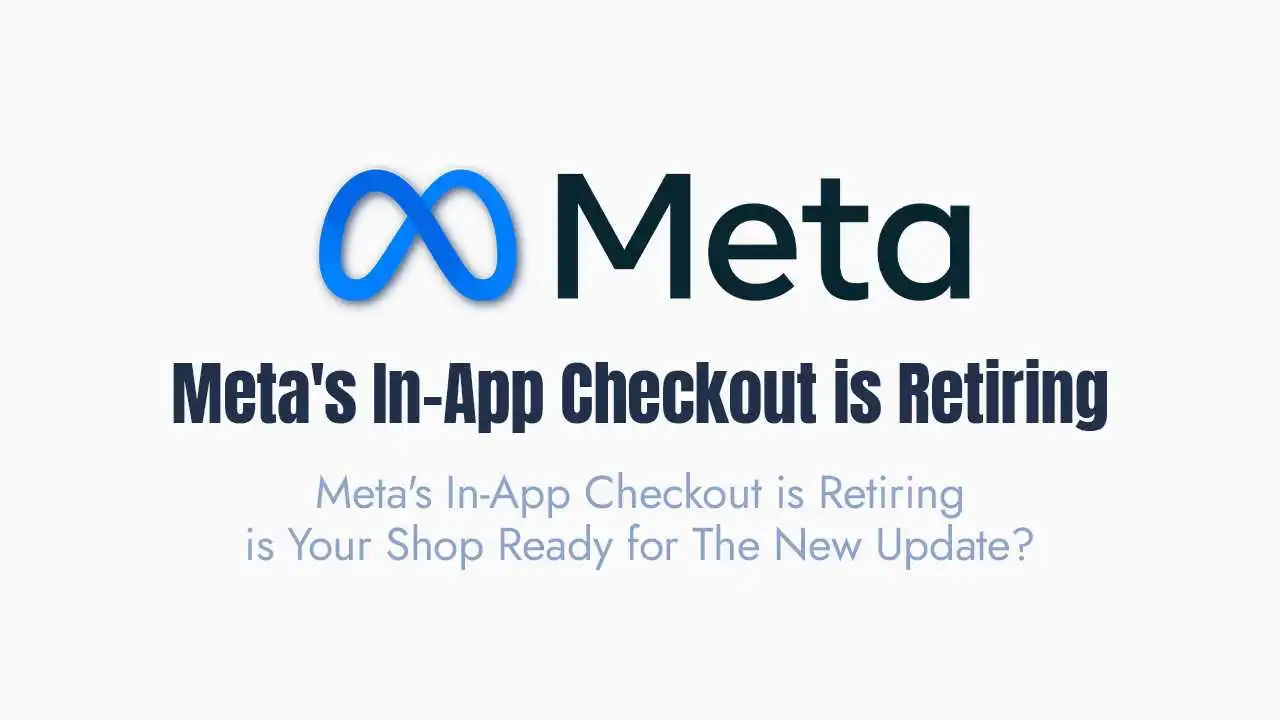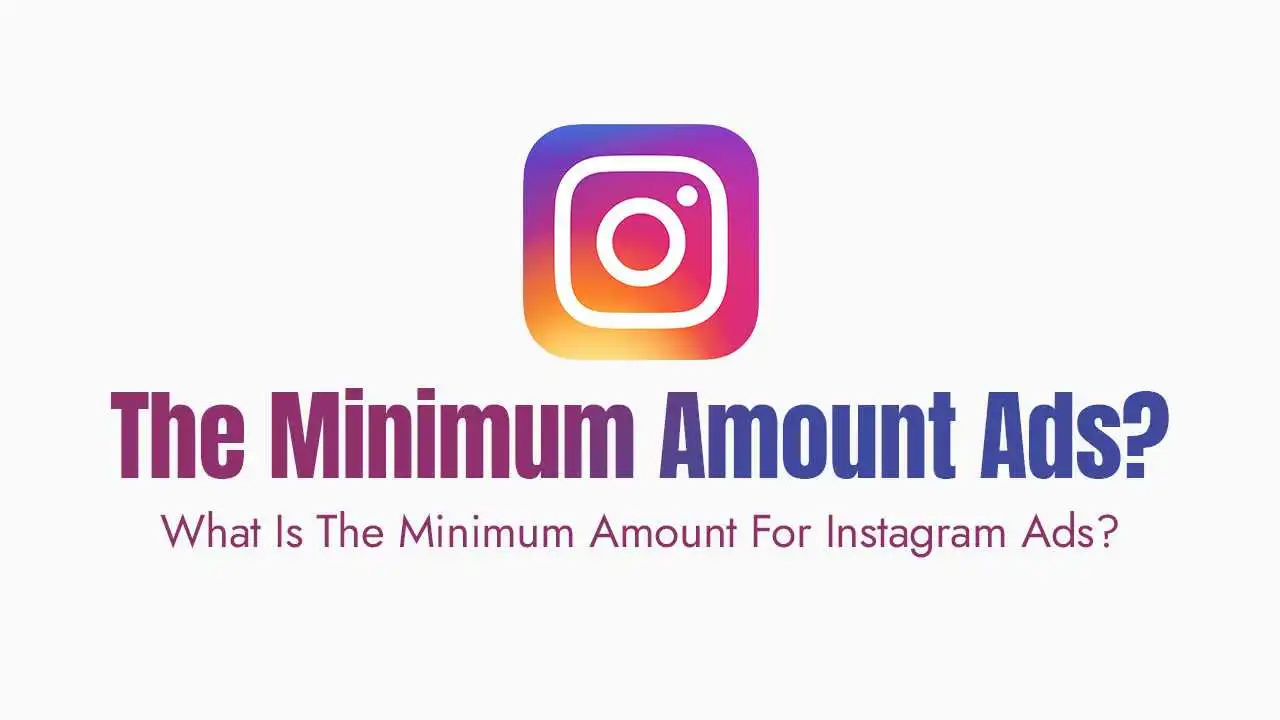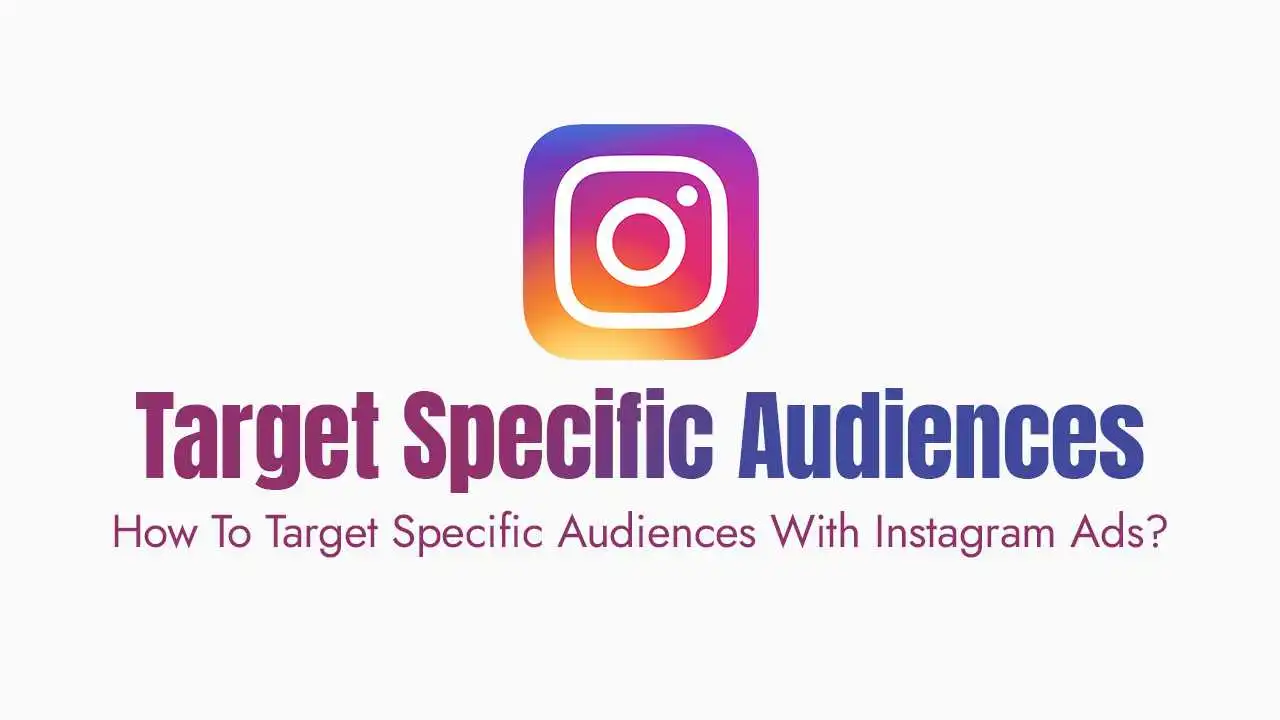Big news for e-commerce businesses leveraging Meta’s platforms: the in-app checkout feature is officially retiring in 2025.
This isn’t just a minor tweak; it’s a fundamental shift that will impact how you sell, advertise, and connect with your customers.
The good news? With proper preparation, this change presents a massive opportunity for growth.
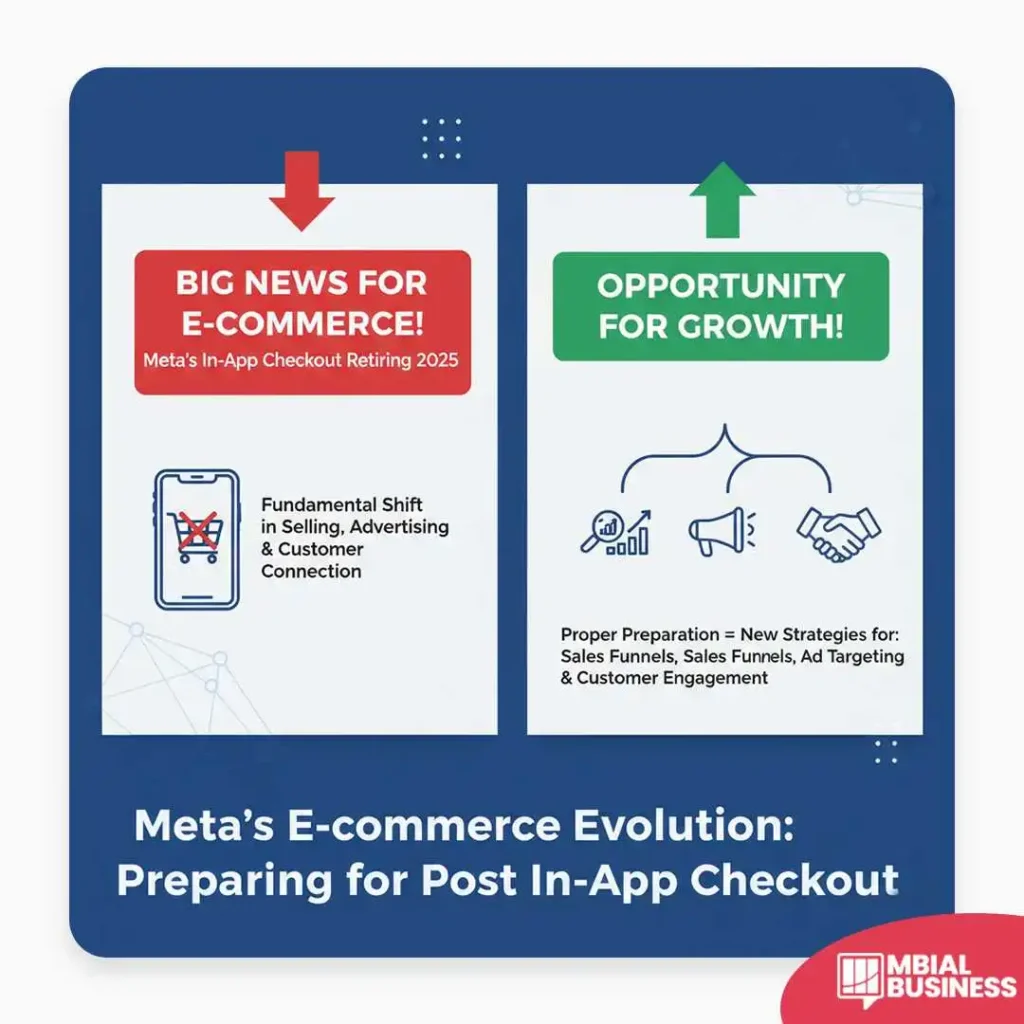
The Big Change and Why It Matters:
Meta's New Goal: Driving Traffic, Not Hosting Transactions
Meta is shifting its focus from facilitating direct sales within its apps to becoming a powerful engine for discovery and traffic generation.
They want to be the place where customers find your products, but then seamlessly transition to your website to complete the purchase.
This means Meta will double down on its AI-driven recommendation engines, helping users discover products they love, and then sending them directly to your digital storefront.
Why Meta is Doing This: The Bigger E-commerce Picture
This move aligns with a broader industry trend where platforms are refining their core strengths. For Meta, that strength lies in user engagement, discovery, and advertising.
By offloading the complexities of transaction processing, inventory management, and customer service to individual businesses, Meta can focus on what it does best: connecting people with products.
Good and Bad News (Risk vs. Opportunity)
The immediate “bad news” is the effort required to adapt. You’ll lose the convenience of in-app purchases and the direct sales data associated with them.
The “good news,” however, is significant.
This change empowers you with more control over the customer journey, strengthens your direct customer relationships, and forces you to optimize your most valuable asset: your website.
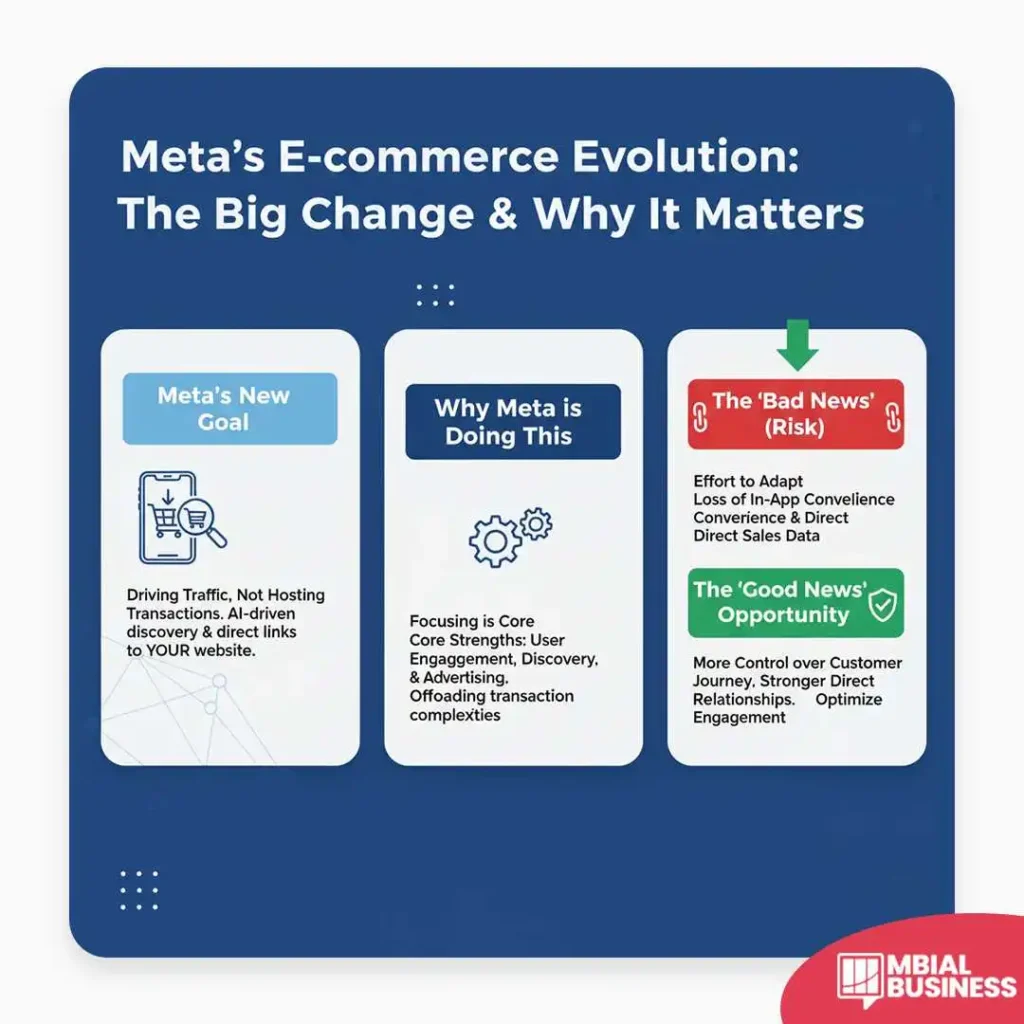
What Your Shop Needs to Fix (Now):
The clock is ticking for 2025. Here’s what you need to prioritize:
Product Links and Inventory Check:
Must-Have: External Checkout Links:
This is non-negotiable. Every single product listed on your Meta Shop needs a direct, functioning link to its corresponding page on your e-commerce website where customers can complete a purchase. Start updating these immediately.
Check All Product Details:
Ensure your product descriptions, images, and pricing on Meta accurately reflect what’s on your website. Inconsistencies will lead to frustration and lost sales.
Taking Over Order Management and Returns:
With in-app checkout gone, you are now fully responsible for the entire post-purchase process.
This means your internal systems for order processing, shipping, customer service, and returns must be robust and efficient.
If you’ve relied heavily on Meta for these functions, it’s time to audit and upgrade your own capabilities.
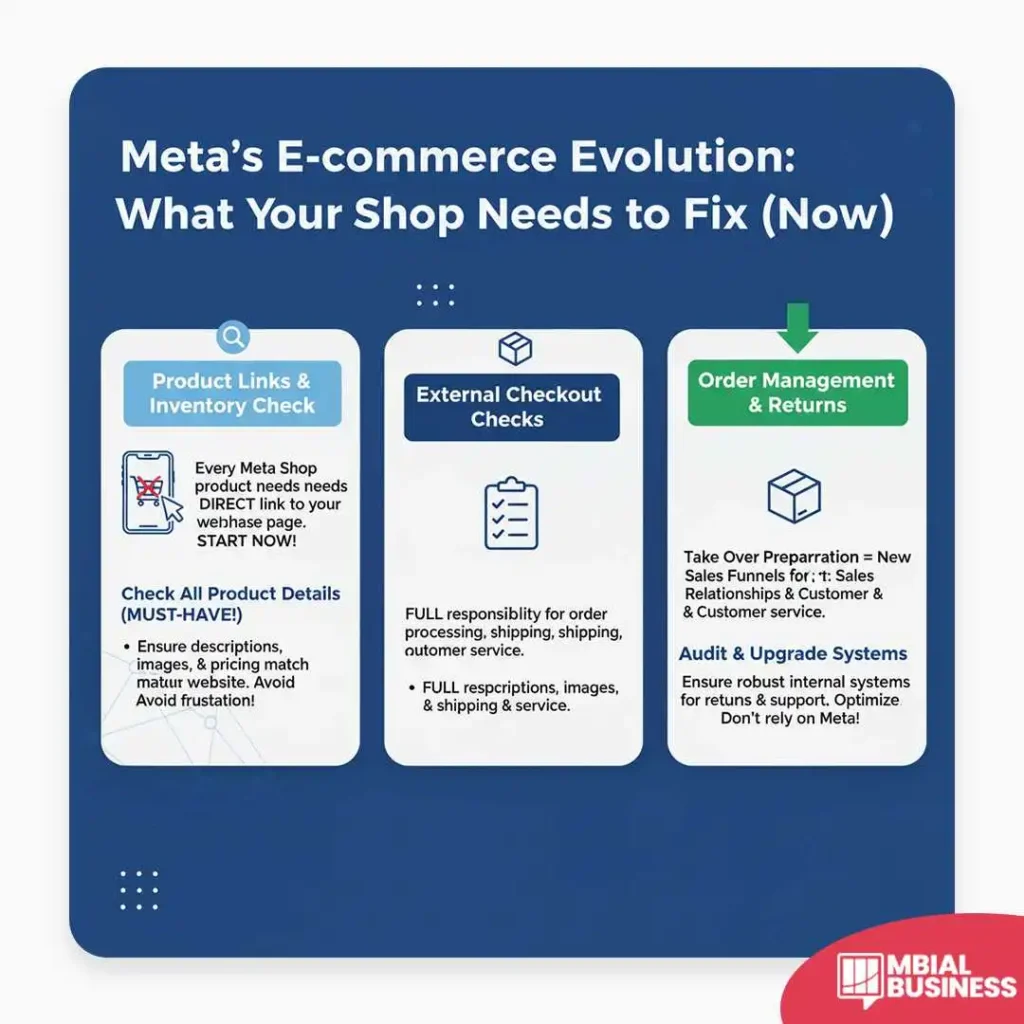
Ad Campaigns and Tracking Must Change:
This is where many businesses will feel the immediate impact.
Losing the Old Sales Metrics:
Old In-App Steps Go Away:
Meta’s in-app checkout used to provide clear metrics on purchases completed within their ecosystem. Those specific conversion events will vanish.
New Focus: Website "Purchase" Data:
Your primary conversion metric for Meta Ads will now be the “Purchase” event fired from your website’s Meta Pixel (or through Conversions API).
How to Set Up Your Ads:
Change Ad Goal to "Website" Only:
All future sales-driven ad campaigns should be optimized for “Website Purchases” or “Website Conversions,” directing traffic exclusively to your e-commerce site.
Why Good Data is Key for Meta's AI Tools:
Meta’s powerful AI relies on vast amounts of data to optimize ad delivery.
By accurately tracking website purchases, you feed its algorithms the information they need to find more high-value customers for you.
The better your data, the smarter Meta’s AI becomes at finding your ideal audience.
Better Tracking (CAPI):
With the increased reliance on website conversions, implementing Meta’s Conversions API (CAPI) is no longer optional; it’s essential.
CAPI provides a more reliable and privacy-resilient way to send website conversion data directly to Meta, supplementing your Pixel data and ensuring optimal ad performance, especially in a world with increasing browser restrictions.
Making Your Website Easy to Use (Friction):
This transition places your website’s user experience firmly in the spotlight.
Expect Fewer Sales (Conversion Risk):
Initially, you might see a dip in conversion rates. The added step of leaving Meta’s apps to complete a purchase introduces “friction.” Customers who are used to quick in-app transactions might drop off if your website isn’t up to par.
Fixes for a Faster, Easier Checkout:
Speed is King (Mobile Mandate):
Most users will be clicking from Meta apps on their mobile devices.
Your website must load blazing fast on mobile, and your checkout process must be intuitive and streamlined for smaller screens.
A slow or clunky mobile experience is a guaranteed conversion killer.
Easy Payment (One-Click Options):
Offer popular payment methods like Apple Pay, Google Pay, Shop Pay, or PayPal for a true “one-click” experience.
The fewer fields a customer has to fill out, the higher your conversion rate will be.
Build Trust (Security Badges):
Display trusted security badges (SSL, payment provider logos) prominently during the checkout process.
Reassure customers that their personal and payment information is safe.
New Ways to Make More Money (Upsells):
Moving customers to your website opens up new opportunities for increasing average order value (AOV).
Implement strategic upsells and cross-sells on product pages and in the cart. This is a chance to truly own the customer journey and maximize revenue per visitor.
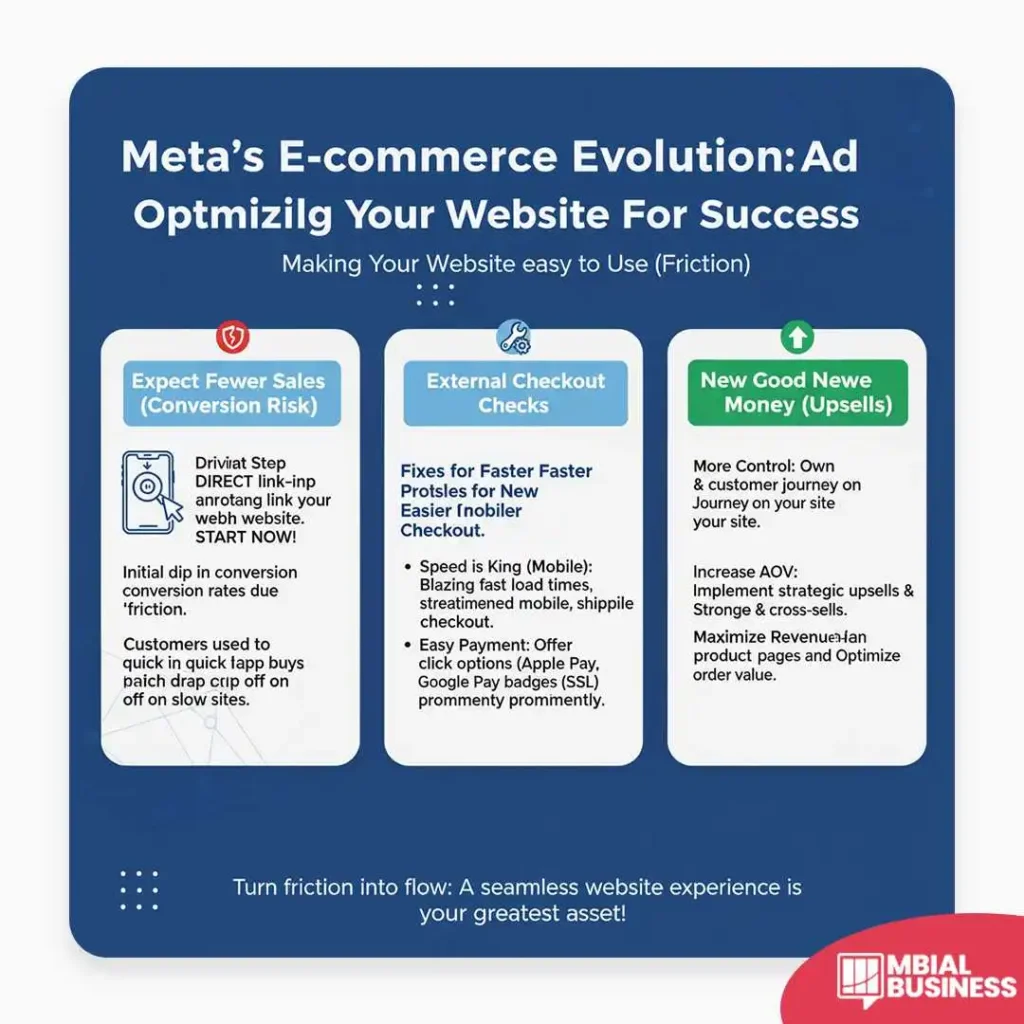
The Future Plan:
Meta’s New Focus: AI-Driven Discovery:
Meta isn’t abandoning e-commerce; it’s refining its role. Expect even more sophisticated AI-driven product recommendations and personalized discovery experiences within their apps.
Your goal is to optimize your product feeds and website experience to leverage this enhanced discovery engine
Getting Help (Platform Support):
Meta will undoubtedly provide resources and support to help businesses make this transition.
Stay tuned for official guides, webinars, and best practices from Meta directly. Don’t hesitate to utilize their support channels if you encounter challenges.
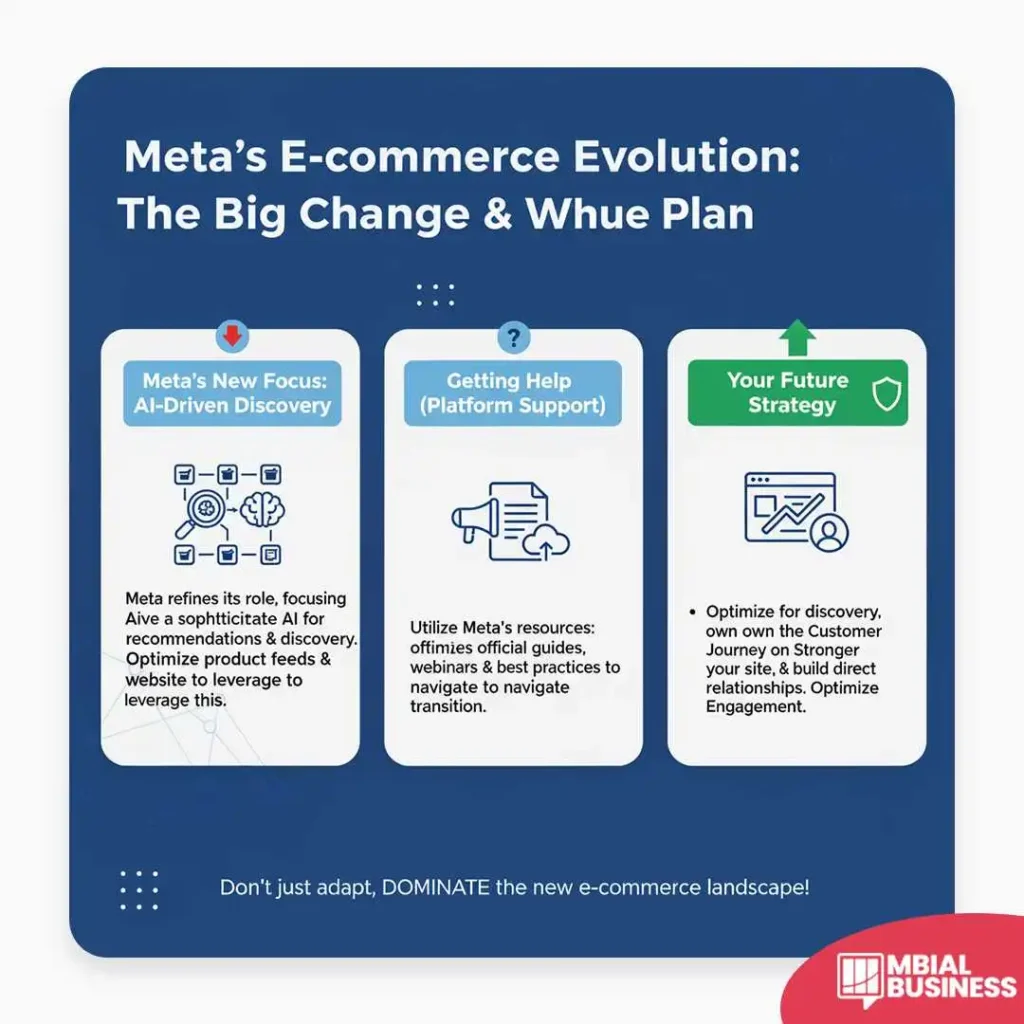
Simple Action Steps (Timeline):
Here’s a phased approach to prepare your business for Meta’s big shift:
Phase 1: What to Do Right Away
Audit Product Links:
Go through every product in your Meta Shop and ensure it links directly to your website’s product page.
Implement CAPI:
If you haven’t already, set up Meta’s Conversions API for more robust tracking.
Review Ad Objectives:
Start planning to shift all sales-focused ad campaigns to “Website Purchase” objectives.
Internal Process Check:
Begin auditing your order management, shipping, and returns processes for full internal ownership.
Phase 2: Make the Website Faster
Mobile Optimization:
Conduct a thorough review of your website’s mobile performance and user experience, especially the checkout flow.
Speed Enhancements:
Work with your development team to improve page load times across your site.
Payment Options:
Integrate one-click payment solutions (Apple Pay, Google Pay, Shop Pay, PayPal) if you haven’t already.
Trust Signals:
Ensure security badges and trust signals are prominently displayed.
Phase 3: Using Your Customer Data
Personalization:
Leverage the customer data collected on your own website to create highly personalized experiences.
Email Marketing:
Strengthen your email marketing efforts, as direct customer relationships become even more critical.
Retention Strategies:
Focus on building loyalty programs and post-purchase engagement to drive repeat business.
The end of Meta’s in-app checkout is a significant change, but it’s not a death knell for e-commerce on their platforms.
Instead, it’s an evolution. By proactively adapting and optimizing your own digital storefront, you can turn this challenge into a powerful opportunity to build a stronger, more resilient, and more profitable online business.
Get started now – 2025 will be here before you know it!

